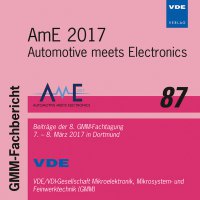A Requirements Engineering Approach to Accelerate Innovation in Automotive Electronics
Konferenz: AmE 2017 – Automotive meets Electronics - 8. GMM-Fachtagung
07.03.2017 - 08.03.2017 in Dortmund, Deutschland
Tagungsband: AmE 2017 – Automotive meets Electronics
Seiten: 6Sprache: EnglischTyp: PDF
Persönliche VDE-Mitglieder erhalten auf diesen Artikel 10% Rabatt
Autoren:
Kress, Andreas; Eberhardt, Markus; Donig, Jens (HOOD Gmbh, Oberhaching, Germany)
Inhalt:
The evolution of modern passenger cars into electronic consumer products packed with more and more last semiconductor innovation cycle chips, is disrupting the long existing and established tier and supplier structures for electronic car devices. The variety of changes like faster product lifecycles turnarounds, more software function depended parts or more exchangeable parts impacts the development process domain as well. Questions around how to foster fast turning development cycles shall be answered during the autoSWIFT [autoSWIFT14] research project (BMBF support code 16Es03) which does focus on the validation and verification side of car electronics. The research task is to search and find new approaches to secure the transition from early showcases to a usable and controllable series part under more volatile conditions. One of the aims therefore is the search for efficient requirements engineering methods to support the OEM - supplier network involved in the development of an electronic application. A standardized and IT friendly formatted mission profile document, based on findings from the RESCAR research project [RESCAR11], is one of the corner stones in the project. To make this standard work in early decision phases either on semiconductor technology issues or electronic application level a process framework based on requirements engineering practices optimized on the specific demands of the development field is necessary. In this paper we present the current work status and the research results for an agile requirements engineering approach which helps to accelerate the innovation cycle of inside car highly integrated semiconductor solution components.


